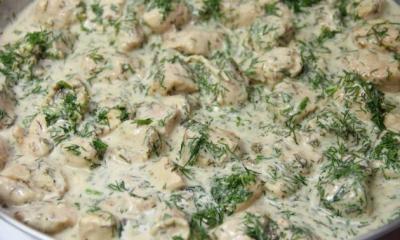The program is hosted by Alexander Gostev. Radio Liberty correspondent in Denmark Sergey Dzhanyan takes part.
Alexander Gostev:
Denmark and Norway - their fates during the Second World War turned out to be very different.
Sergey Janyan:
With the outbreak of World War II, Denmark and Norway declared their neutrality, however, when planning the invasion of France, the German command was concerned that the Anglo-French troops could occupy these Scandinavian countries, gaining a foothold for attacks on Germany. The plan to capture Denmark and Norway was approved in December 1939, and on April 9, 1940, a large-scale military operation began under the code name "Weser Maneuvers".
For Denmark and Norway, the attack of Nazi Germany came as a complete surprise. On the morning of April 9, German troops landed a large landing in Copenhagen, a massive air attack destroyed a small Danish aircraft on the ground, and motorized units of the Wehrmacht crossed the Danish-German border and began advancing in Jutland. Danish troops tried to resist, but a few hours after the attack, King Christian X was under threat of bombardment residential areas was forced to sign the act of surrender. As a result, in just a day, the German army occupied Denmark without hindrance, losing only two people killed.
Events developed quite differently in Norway, where the German invaders met stubborn resistance from the very first hours. The Norwegian coastal artillery was able to inflict significant damage on the German fleet, and they managed to take out the gold reserves from the country and evacuate members of the government and the royal family, who later formed a government in exile. However, the forces were unequal, and by June 16, 1940, the Germans managed to take control of the entire territory of Norway. Thus, Germany received a strategically important foothold in the north of Europe, having improved the basing of its submarines and aircraft and providing the supply of strategic raw materials from the Scandinavian countries.
The occupation of Denmark by Nazi Germany ended on 5 May and Norway on 8 May 1945 after the surrender of German forces in Europe. During the five years of occupation, Norway lost 10,300 of its citizens - many of them died during the bombing, were tortured in concentration camps or executed for participating in the resistance movement. The losses of the Danish side are much less - 2685 people, and some believe that the small victims are the merit of the Danish politicians. In occupied Denmark, the coalition government led by Prime Minister Thorvald Stauning and Foreign Minister Eric Skavenius tried to maintain control of internal affairs until the summer of 1943, acting as active supporters of cooperation with the German administration. However, as a result of the growth of anti-German sentiments and the activation of the Danish resistance movement, cooperation with the invaders was interrupted.
This page in the history of Denmark is still not closed, says Anders Fogh Rasmussen, one of the toughest critics of the collaborationist policy, the former Prime Minister of Denmark, and now NATO Secretary General.
Anders Fogh Rasmussen: If everyone in Europe and America thought the same as the Danish politicians, then no one would resist Hitler. The victory would have gone to the Nazis and Europe would have looked completely different than it does now.
Sergey Janyan: However, Rasmussen's former cabinet colleague, Danish Foreign Minister Per Stig Moeller, is more cautious about the past.
Per Stig Moeller: That's a very difficult question. It is one thing to participate in the resistance movement yourself, and quite another to call on others to do so. It is easy to send tens of thousands of young people to their deaths, it is easy to make decisions that will result in many cities being carpet bombed. But if this does not contribute to the defeat of the enemy, then one should moderate the ardor. We must wait for the right moment, otherwise you can kill a lot of people, losing the opportunity to fight. This is an eternal dilemma: pragmatists seeking to keep us safe and sound, and underground heroes fighting for the honor of the Motherland and striving to defeat the enemy at any cost. I don't think there is a definitive solution here.
Sergey Janyan: However, unlike politicians, most ordinary Danes have a quite definite view of the events of the wartime.
Esben Bistrup Halvorsen: The day when we celebrate the liberation of Denmark from the fascist occupation is perceived by my generation as something very distant, which is hard to believe. But behind the events of those years are real, living people - my grandfather, for example. And today Denmark can rightfully be proud of him and all other members of the Danish Resistance. The past must not be forgotten - after all, it has not ended at all, and the Nazis are again raising their heads in Europe. So even today history can teach us a lot.
Sergey Janyan:
Says the grandson of the Danish underground veteran Fritz Bistrup, Esben Bistrup Halvorsen.
The lessons of the Second World War are not forgotten in Norway, where this year they celebrate the 150th anniversary of the birth of the writer Knut Hamsun. The name of one of the classics of world literature is perceived ambiguously by the Norwegians themselves - during the war years, Hamsun openly sympathized with the Nazis and supported the collaborationist government of Vidkun Quisling. The anniversary celebrations divided Norwegian society, and today many here believe that the brilliant novelist, who called Hitler a "fighter for humanity" and "a reformer of the highest class", is unworthy of national honors.
Per Petterson: Yes, Knut Hamsun is a must read. It is still necessary to teach his works at school. However, naming a street or square after someone who supported the Nazis is not allowed. You can't put up a monument to him. Do you know what I think? It just occurred to me now - you need to give the street the name of one of Hamsun's heroes.
Sergey Janyan: Says the famous Norwegian writer Per Petterson.
1. Background During the First World War, Norway remained neutral. After 1933, the development of Norway depended on three factors:
- tight financial policy, facilitated by conservative parties; Pacifism is promoted by the Norwegian Workers' Party, which has been in power since 1933; the doctrine of neutrality, proceeding from the fact that there will be no need for Norway to participate in the war if it remains neutral.
The invasion of Norway took place on the night of April 8-9, 1940. Germany invaded Norway on the grounds that Norway needed protection from military aggression from Britain and France. Strategically, Germany solved the following problems through this:
- Gained access to ice-free northern Norwegian ports for further access to Northern Arctic Ocean and the North Atlantic. Access was gained to Swedish iron ore, which was exported through Narvik. preemptively British and French invasion to Norway. Strengthened propaganda of the Third Reich.
During the last two years of the war, the Norwegian government-in-exile obtained permission and cooperation from Sweden to establish military formations in Swedish territory (the so-called "police troops") recruited from Norwegian refugees. The term "police" is conditional due to the fact that in fact they were purely military formations. Their total number was 12,000 men. Parts of this "police" were involved in the liberation of Finnmark in the winter of 1944-1945. The rest participated in the liberation of the rest of Norway after the surrender of Germany in May 1945.
, was the only operation of this magnitude that was developed by the German High Command.
The capture of Denmark and Norway - even before the start of operations in the West, was insisted, first of all, by the High Command of the Navy (OKM), which at the end of January 1940, Hitler entrusted its development. The operation was called Weserubung - "Teachings on the Weser". To prepare and implement plans for a ground operation, a special headquarters of the XXI Group was formed, headed by General Nikolaus von Falkenhorst.
The landing of German infantrymen in 1940, the holds of merchant ships were used to achieve surprise
German capture of Denmark
German troops (170th Infantry Division and 11th Rifle Brigade) crossed the German-Danish border at 05:25 on April 9, 1940. At the same time, the 198th division went to sea on transports from Kiel. The first grouping quickly established control over Jutland, the second - over Zealand. At the same time, paratroopers captured strategically important airfields and the island of Bornholm. In the meantime, German soldiers landed from the ship that entered the port of Copenhagen and surrounded the citadel of the city.

German troops land in Norway, April 9, 1940, operation codenamed Weserübung "Teachings on the Weser"
The operation took only two hours, and already at 07:20, King Christian X ordered the troops to stop resisting.
the landing of the Teachings on the Weser was a disaster for the Kriegsmarine, although it ended in a German victory.

German tanks Pz. Kpfw I and II on the streets of Copenhagen. April 1940
The Kriegsmarine committed almost all of its surface forces to Operation Weserübung. German ships left the ports, depending on the distance they had to go - April 3-7. On the morning of April 9, German troops under the command of General Eduard Dietl landed in the harbor of Narvik, whose garrison surrendered almost without resistance. The Germans did not have any particular problems either in Stavanger or in Trondheim, although in the latter they managed to capture the airfield and part of the batteries only on April 11.

German warship in the bay near the Norwegian city
In April 1940, Britain and France came to the aid of Norway with an expeditionary force. In Bergen, the capture of which took 6-8 hours, the German infantrymen were forced to dig in after a strong group of the British Navy approached the fjord. Also, some problems arose in Kristiansand, where it was possible to suppress resistance only in the evening. The situation was somewhat worse during the capture of the capital of Norway - Oslo. After the unexpected loss of the heavy cruiser Blucher by the German fleet, the entire operation was in jeopardy. Nevertheless, the Norwegians were already convinced of the futility of resistance, and their commanders surrendered first the port, and then the city. On the morning of April 10, the Kriegsmarine ships entered the port of Oslo.

French and Norwegian ski troops
Most of Southern Norway was occupied by 22 April.
BATTLE FOR NARVIK
Meanwhile, the position of the German mountain rangers in Narvik had deteriorated. The British squadron approaching the fjord attacked German destroyers that did not expect an attack on April 10 - all ten ships were put out of action on April 10 and 13.

German mountain rangers were considered elite troops before the advent of the SS
2000 rangers of the 3rd Mountain Rifle Division were blocked from the sea. On April 14, a strong detachment was landed from British ships near Narvik, consisting of British, French and Polish troops. Allied troops, supported by the 6th Norwegian division, were advancing on Narvik for almost a month. The situation in which Dietl found himself was generally critical, since it was too difficult for reinforcements to reach them by land.

British troops land in Norway. April - June 1940
On May 12, Allied forces occupied the northern part of Narvik, and by May 28 they finally took control of the entire city. The heavily battered mountain rangers were forced to withdraw towards the Westfjord, with little or no prospect of recovery.
The decisive role in the completion of the Norwegian campaign was played by the heavy defeats of the Anglo-French troops in the battles in France. In the face of catastrophic defeats, the Anglo-French command was forced to curtail the operation in Norway and withdraw the fleet and troops home.

British troops on the beach in Norway, May 1940

British soldiers of the 4th Lincolnshire Regiment marched 90 km (56 miles) through the mountains to avoid being cut off, April 1940
On June 3-8, the Allied contingent was successfully evacuated from Norway. King Haakon VII of Norway and the Norwegian government went into exile on a British ship. The Norwegian troops in Central Norway, who were unable to escape to Sweden, laid down their arms on 2 June.

German tank moving through the streets of Lillehammer April 1940 photo
Winston Churchill “Out of all these catastrophes and confusion, one important fact, potentially affecting the entire further course of the war. In a desperate battle with the British navy, the Germans destroyed their own fleet, which they needed for the upcoming decisive clashes [...] By the end of June 1940 - a significant date - the active German fleet had no more than one cruiser armed with eight-inch guns, two light cruisers and four destroyers. Although many of their damaged ships could be repaired like ours, the German Navy was no longer a factor in solving the most important task - the task of invading England.
German invasion of Denmark and Norway 1940
important dates
- April 3, 1940 The exit of the German fleet to the sea.
- April 9, 1940 Capture by German troops of Denmark and landing in Norway.
- April 10, 1940 Capture of Oslo by German troops.
- April 10, 1940 Naval battle in the Narvik area between German and British ships.
- April 14, 1940 Landing of the Anglo-French-Polish contingent.
- May 28, 1940 Allied occupation of Narvik.
- June 2, 1940 Capitulation of Norwegian troops in Central Norway.
- June 3-8, 1940 Allied evacuation from Norway.
- June 10, 1940 Capitulation of Norwegian troops in Northern Norway.
- On June 10, Wehrmacht troops occupied northern Norway and six days later controlled the entire territory of the country.
- June 16, 1940 Occupation of the entire territory of Norway by the German Wehrmacht.

The invasion of Norway, the advance of German soldiers along a mountain path near the city of Bagn
German invasion of Denmark and Norway 1940
Kriegsmarine losses
Operation Exercise on the Weser, although it ended in a German victory, was a disaster for navy and, during the Third Reich, the "Kriegsmarine" was the official name of the Navy. Were sunk:
- heavy cruiser "Blucher"
- light cruisers "Karlsruhe" and "Koenigsberg"
- 10 destroyers
- artillery training ship "Brummer"
- 8 submarines
- destroyer
- 11 transports, etc.
The battleships Scharnhorst and Gneisenau, the pocket battleship Lützow, the heavy cruiser Admiral Hipper and light cruiser"Emden". Compensate for these losses Naval Forces there was nothing.
Aftermath of World War II
German troops occupied Norway in April 1940. A pro-German puppet state was created on the territory of the country.
Remark 1
The occupation ended five years later in May 1945, when the fascist regime in Germany capitulated.
At that moment, about 400 thousand German military men were located in Norway (the country's population then did not exceed 4 million). All the years of occupation, the Nazis exploited the economy of Norway, using it to wage war. The Nazis used terror against local residents by applying mass destruction.
The troops of the Norwegian resistance gradually won back positions from the Nazis. After reuniting with allied forces from Great Britain, the liberation of Norway was completed. On June 7, 1945, King Haakon returned from forced exile to the UK.
Remark 2
Haakon VII - King of Norway from 1905 to 1957. For five years he headed the government in London, where he emigrated after being occupied by Nazi Germany. His monogram - H7 - has become a symbol of the Norwegian Resistance. Years of life 1872-1957.
During the war years, the Nazis removed 40% of its GNP from Norway. Great destruction was made over vast territories in the course of direct hostilities and bombardments. Finnmark suffered especially during the years of occupation. The scorched earth tactics used by the Nazis during the retreat caused the heaviest damage to the country. During the war years, 10,262 Norwegians died, more than 40,000 people were captured by the Nazis.
Economic recovery
The first priority after the liberation of the country was the question of restoring the economy of Norway. The Workers' Party came to power in 1945, its leader Einar Gerhardsen headed the government. A five-year program for the recovery of the Norwegian economy was developed. But the recovery process went faster than expected. Already in 1946, Hungary exceeded the figures of 1938. By 1949, the pre-war level was reached in all major indicators. In subsequent years, progress continued.
In the 1960s, the oil era began in the Norwegian economy. Oil wells were discovered:
- in the North Sea;
- in the Barents Sea;
- in the Norwegian Sea.
This made it possible to carry out major changes in the economic structure, devoting a large share to the production of oil and gas. The main oil reserves are concentrated on the shelf in central Norway.
Foreign policy of Norway
Immediately after the Second World War, Norway occupied a minor position in the international arena. The state tried to adhere to a policy of neutrality. The Norwegians stayed away from possible military conflicts between the great world powers. Also, Norway did not enter into military alliances.
The formation of the UN gave Norwegians hope for the preservation of national security. The Norwegian Trygve Lie was elected as the first General Secretary.
Remark 4
Trygve Halfdan Lie was the first UN Secretary-General from 1946-1952. Years of life 1896-1968. He sought to stop the development of conflicts in Korea, Kashmir and West Berlin.
Increasing tensions between West and East led Norway to cooperate with the Western powers. The country accepted assistance in the implementation of the "Marshall Plan" in the amount of NOK 2,500 million.
In 1948, after the communist takeover in Czechoslovakia, the USSR proposed to Norway to create a defense alliance. This provoked a protest reaction. In 1949 Norway joins NATO. To this day, most of the country's population believes that NATO membership has a beneficial effect on the country's position in the world.
The achievement of full political independence coincided with the beginning of accelerated industrial development. At the beginning of the 20th century the Norwegian merchant fleet was replenished by steamships, and whaling ships began to hunt in the waters of the Antarctic. For a long period, the liberal party Venstre was in power, which carried out a number of social reforms, including the full enfranchisement of women in 1913 (Norway was a pioneer among European states in this respect) and the adoption of laws to limit foreign investment.
During the First World War, Norway remained neutral, although Norwegian sailors sailed on Allied ships that broke through the blockade organized by German submarines. In 1920, Norway was granted sovereignty over the Svalbard (Svalbard) archipelago as a token of gratitude for supporting the Entente country. Wartime anxiety helped bring about reconciliation with Sweden, and Norway subsequently played a more active role in international life through the League of Nations. The first and last presidents of this organization were Norwegians.
In domestic politics, the interwar period was marked by the growing influence of the Norwegian Workers' Party (NLP), which originated among the fishermen and tenants of the far north, and then received the support of industrial workers. Under the influence of the revolution in Russia, the revolutionary wing of this party gained the upper hand in 1918, and for some time the party was part of the Communist International. However, after the breakaway of the Social Democrats in 1921, the ILP broke off relations with the Comintern (1923). In the same year, the independent Communist Party of Norway (CPN) was formed, and in 1927 the Social Democrats again merged with the CHP. In 1935, a government of moderate representatives of the CHP was in power with the support of the Peasant Party, which gave its votes in exchange for subsidies to agriculture and fisheries. Despite the unsuccessful experiment with Prohibition (abolished in 1927) and the mass unemployment generated by the crisis, Norway has made progress in health care, housing, social welfare and cultural development.
April 9, 1940 Germany unexpectedly attacked Norway. The country was taken by surprise. Only in the Oslofjord area were the Norwegians able to put up stubborn resistance to the enemy thanks to reliable defensive fortifications. Within three weeks, the German troops dispersed throughout the interior of the country, preventing individual formations of the Norwegian army from uniting. The port city of Narvik in the far north was recaptured from the Germans a few days later, but Allied support proved insufficient, and when Germany launched offensive operations in Western Europe, Allied forces had to be evacuated. The king and government fled to Great Britain, where they continued to lead the merchant fleet, small infantry units, naval and air forces. The Storting gave the king and government the authority to lead the country from abroad. In addition to the ruling CHP, members of other parties were introduced into the government to strengthen it.
A puppet government headed by Vidkun Quisling was created in Norway. In addition to acts of sabotage and active underground propaganda, the leaders of the Resistance secretly organized military training and sent many young people to Sweden, where permission was obtained to train "police formations". The king and government returned to the country on June 7, 1945. Approx. 90 thousand cases on charges of high treason and other offences. Quisling, along with 24 traitors, was shot, 20 thousand people were sentenced to prison.
In the 1945 elections, the CHP won the majority of votes for the first time and remained in power for 20 years. During this period, the electoral system was transformed by abolishing the article of the constitution on granting 2/3 of the seats in the Storting to deputies from rural areas of the country. The regulatory role of the state has been extended to national planning. State control over the prices of goods and services was introduced.
The financial and credit policy of the government helped maintain a fairly high growth rate of economic indicators even during the global recession in the 1970s. The necessary funds for the expansion of production were obtained through large foreign loans against future income from oil and gas production on the shelf of the North Sea.
In the early post-war years, Norway showed the same commitment to the UN that it had shown to the League of Nations before the war. However, the atmosphere of the Cold War put the Scandinavian defense treaty on the agenda. Norway joined NATO from the very beginning of its foundation in 1949.
Since 1961, the ILP remained one of the largest parties in the Storting, although it did not have a majority of seats there. In 1965, a coalition of non-socialist parties came to power with a slight majority. In 1971, the CHP again won the elections, and the government was headed by Trygve Brateli. In the 1960s, Norway established strong ties with the countries of the EEC, especially with the FRG. However, many Norwegians opposed joining the common market, fearing competition from European countries in the field of fishing, shipbuilding and other sectors of the economy. In 1972, at a general referendum, the question of Norway's participation in the EEC was decided in the negative, and the Brateli government resigned. It was replaced by a non-socialist government led by Lars Korvall of the Christian People's Party. In 1973, it concluded a free trade agreement with the EEC, which created great advantages for the export of a number of Norwegian goods.
After the 1973 elections, the government was again headed by Brateli, although the CHP did not win a majority of the seats in the Storting. In 1976, Odvar Nurli came to power. As a result of the 1976 elections, the CHP again formed a minority government. In February 1981, citing deteriorating health, Nurli resigned, and Gro Harlem Bruntland was appointed prime minister.
The center-right parties increased their influence in the elections in September 1981, and the leader of the Conservative Party (Høire) Kore Willok formed the first government since 1928 from members of this party. During this time, the Norwegian economy was on the rise thanks to rapid growth oil production and high prices on the world market.
In the 1980s, environmental issues took on an important role. In particular, the forests of Norway have been hit hard by acid rain caused by the release of pollutants into the atmosphere by UK industries. As a result of the accident at the Chernobyl nuclear power plant in 1986, significant damage was caused to the Norwegian reindeer herding.
After the 1985 elections, negotiations between the socialists and their opponents stalled. The fall in oil prices gave rise to inflation, there were problems with the financing of social security programs. Willock resigned and Bruntland returned to power. The results of the 1989 elections made it difficult to form a coalition government. The non-socialist minority conservative government led by Jan Suce resorted to unpopular measures that stimulated unemployment. A year later, it resigned due to disagreements over the creation of the European Economic Area. The Workers' Party, led by Brutland, re-formed a minority government, which in 1992 resumed negotiations on Norway's accession to the EU.
In the 1993 elections, the Workers' Party remained in power, but did not win a majority of seats in parliament. Conservatives - from the very right (Party of Progress) to the very left (People's Socialist Party) - were increasingly losing their positions. The center party, opposed to joining the EU, won three times as many seats and moved into second place in terms of influence in parliament.
The new government has again raised the issue of Norway's accession to the EU. This proposal was strongly supported by voters from three parties - the Workers' Party, the Conservative Party and the Progress Party, living in cities in the south of the country. The Center Party, representing the interests of the rural population and farmers, mostly opposed to the EU, led the opposition, gaining support from the extreme left and Christian Democrats. In a popular referendum in November 1994, Norwegian voters, despite the positive results of voting in Sweden and Finland a few weeks earlier, again rejected Norway's participation in the EU. A record number of voters participated in the voting (86.6%), of which 52.2% were against EU membership, and 47.8% were in favor of joining this organization.
In October 1996, Gro Harlem Bruntland resigned and was replaced by CHP leader Thorbjørn Jagland. Despite the strengthening of the economy, the reduction of unemployment and the stabilization of inflation, the new leadership of the country could not ensure the victory of the CHP in the elections in September 1997. The Jagland government resigned in October 1997.
The centre-right parties still did not have a common position on the issue of participation in the EU. The Progress Party, opposed to immigration and for the rational use of the country's oil resources, this time gained more seats in the Storting (25 to 10). Moderate centre-right parties refused any collaboration with the Progress Party. HPP leader Kjell Magne Bundevik, a former Lutheran pastor, formed a coalition of three centrist parties (CHP, Center Party and Venstre), representing only 42 of the 165 deputies of the Storting. On this basis, a minority government was formed.
In the early 1990s, Norway achieved wealth growth through large-scale oil and gas exports. The sharp drop in world oil prices in 1998 hit the country's budget hard, and the government was so divided that Prime Minister Bundevik had to take a month's vacation to restoring peace of mind».
In the 1990s, the royal family received media attention. In 1994, unmarried Princess Mertha Louise became involved in divorce proceedings in the UK. In 1998, the king and queen were criticized for overspending public funds on their apartments. Norway actively participates in international cooperation, in particular in the settlement of the situation in the Middle East. In 1998, Bruntland was appointed Director General of the World Health Organization. Jens Stoltenberg served as the United Nations High Commissioner for Refugees. Norway continues to be criticized by defenders environment for ignoring agreements to limit the fishing of marine mammals - whales and seals.








